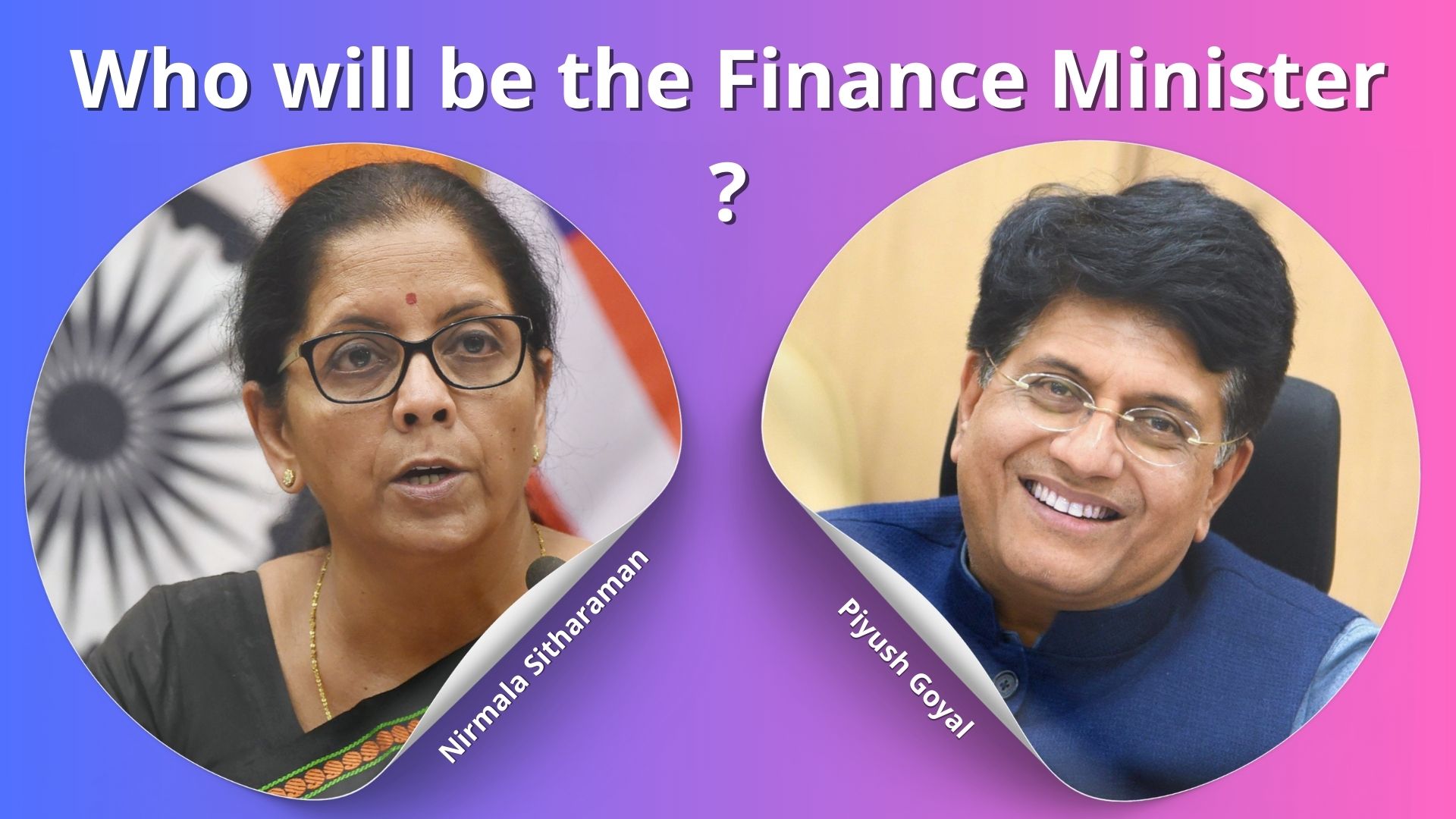As the Modi 3.0 government prepares to take office in 2024, the debate over who will become the next Finance Minister of India is heating up. The leading contenders are Nirmala Sitharaman, the current Finance Minister, and Piyush Goyal, a versatile minister with a proven track record across multiple key portfolios. This article delves into their credentials, achievements, and the potential impact each could have on India’s economy.
Nirmala Sitharaman: The Experienced Reformer
Tenure and Achievements: Nirmala Sitharaman has been serving as the Finance Minister since May 2019, navigating through one of the most tumultuous periods in recent history. Here are some highlights of her tenure:
- Union Budget Reforms:
- Introduced a new income tax regime with reduced tax rates and simplification, offering taxpayers an alternative to the existing tax structure.
- Implemented the reduction of corporate tax rates to attract investment and stimulate economic growth.
- Atmanirbhar Bharat Abhiyan:
- Launched a comprehensive economic package aimed at making India self-reliant, focusing on sectors such as agriculture, MSMEs, and manufacturing.
- Promoted local manufacturing and reduced dependency on imports.
- COVID-19 Economic Response:
- Announced multiple stimulus packages to mitigate the economic impact of the pandemic, focusing on sectors like healthcare, agriculture, and infrastructure.
- Extended financial support to vulnerable sections of society through direct benefit transfers and food security measures.
- Banking and Financial Sector Reforms:
- Led efforts to recapitalize public sector banks and strengthen the banking sector.
- Promoted digital transactions and enhanced financial inclusion through initiatives like the Jan Dhan Yojana and the Unified Payments Interface (UPI).
- Structural Reforms:
- Implemented significant reforms in agriculture, including the controversial farm laws aimed at liberalizing the agricultural market.
- Reformed labor laws to improve the ease of doing business and attract foreign investments.
Strengths:
- Crisis Management: Sitharaman’s ability to manage the economic fallout from the COVID-19 pandemic showcased her crisis management skills. The economic stimulus packages and reforms she introduced were pivotal in stabilizing the economy.
- Reform-Oriented: Her tenure is marked by bold and comprehensive reforms aimed at long-term economic stability and growth.
- International Relations: She has built strong relationships with international financial institutions and global investors, enhancing India’s economic diplomacy.
Challenges:
- Economic Performance: Critics highlight the economic slowdown and high inflation rates during her tenure, questioning the effectiveness of some of her policies.
- Public Perception: There are mixed reactions to her handling of economic challenges, with some viewing her policies as insufficiently aggressive in driving growth.
Piyush Goyal: The Pro-Business Strategist
Tenure and Achievements: Piyush Goyal has held multiple key portfolios, including Railways, Commerce, and Industry, along with serving as interim Finance Minister twice. His tenure is marked by several notable achievements:
- Interim Finance Minister:
- Presented the Interim Budget 2019, which focused on tax rebates for the middle class, direct income support for farmers (Pradhan Mantri Kisan Samman Nidhi), and pension schemes for unorganized sector workers.
- Railway Modernization:
- Implemented significant reforms and modernization efforts in the railway sector, including the introduction of high-speed trains, station redevelopment projects, and improved passenger amenities.
- Enhanced the operational efficiency and financial health of Indian Railways through various initiatives and policy changes.
- Commerce and Industry:
- Boosted India’s trade and investment profile by promoting the ease of doing business and implementing policies to attract foreign direct investment (FDI).
- Led efforts to negotiate and finalize several important trade agreements, enhancing India’s global trade relations.
- Energy Sector Reforms:
- As Minister of Power, he oversaw major reforms in the energy sector, including the implementation of the Ujwal DISCOM Assurance Yojana (UDAY) to improve the financial health of power distribution companies.
- Promoted renewable energy initiatives, significantly increasing India’s renewable energy capacity.
Strengths:
- Versatility: Goyal’s ability to manage diverse portfolios effectively demonstrates his versatility and leadership skills.
- Pro-Business Approach: Known for his pro-business stance, Goyal’s policies are aimed at creating a conducive environment for investments and economic growth.
- Track Record: His successful reforms and modernization efforts in the railway and energy sectors highlight his capability to drive large-scale projects.
Challenges:
- Limited Tenure as FM: Goyal’s experience as Finance Minister is limited to interim periods, raising questions about his readiness for a full-term role.
- Balancing Acts: Handling multiple ministries could stretch his focus and effectiveness, potentially impacting his ability to address complex economic issues.
Key Considerations for Modi 3.0
- Economic Challenges: The next Finance Minister will need to address issues such as economic recovery post-pandemic, inflation control, job creation, and fostering sustainable growth.
- Policy Continuity vs. Change: The choice between Sitharaman and Goyal will reflect the government’s decision on whether to continue with current economic policies or introduce new strategies.
- Public and Investor Confidence: The new Finance Minister’s ability to inspire confidence among the public and investors, both domestically and internationally, will be crucial for economic stability and growth.
Conclusion
The debate over who will become the Finance Minister in Modi 3.0 is a critical one, with each candidate bringing unique strengths and challenges to the table. Nirmala Sitharaman’s experience and reform-oriented approach offer continuity and stability, while Piyush Goyal’s pro-business stance and versatility present a dynamic alternative. As the Modi 3.0 government makes its decision, the choice will signal its economic priorities and strategy for the coming term, shaping India’s economic future. The decision will ultimately depend on the government’s assessment of the current economic landscape and its vision for India’s growth trajectory.


Leave a Reply